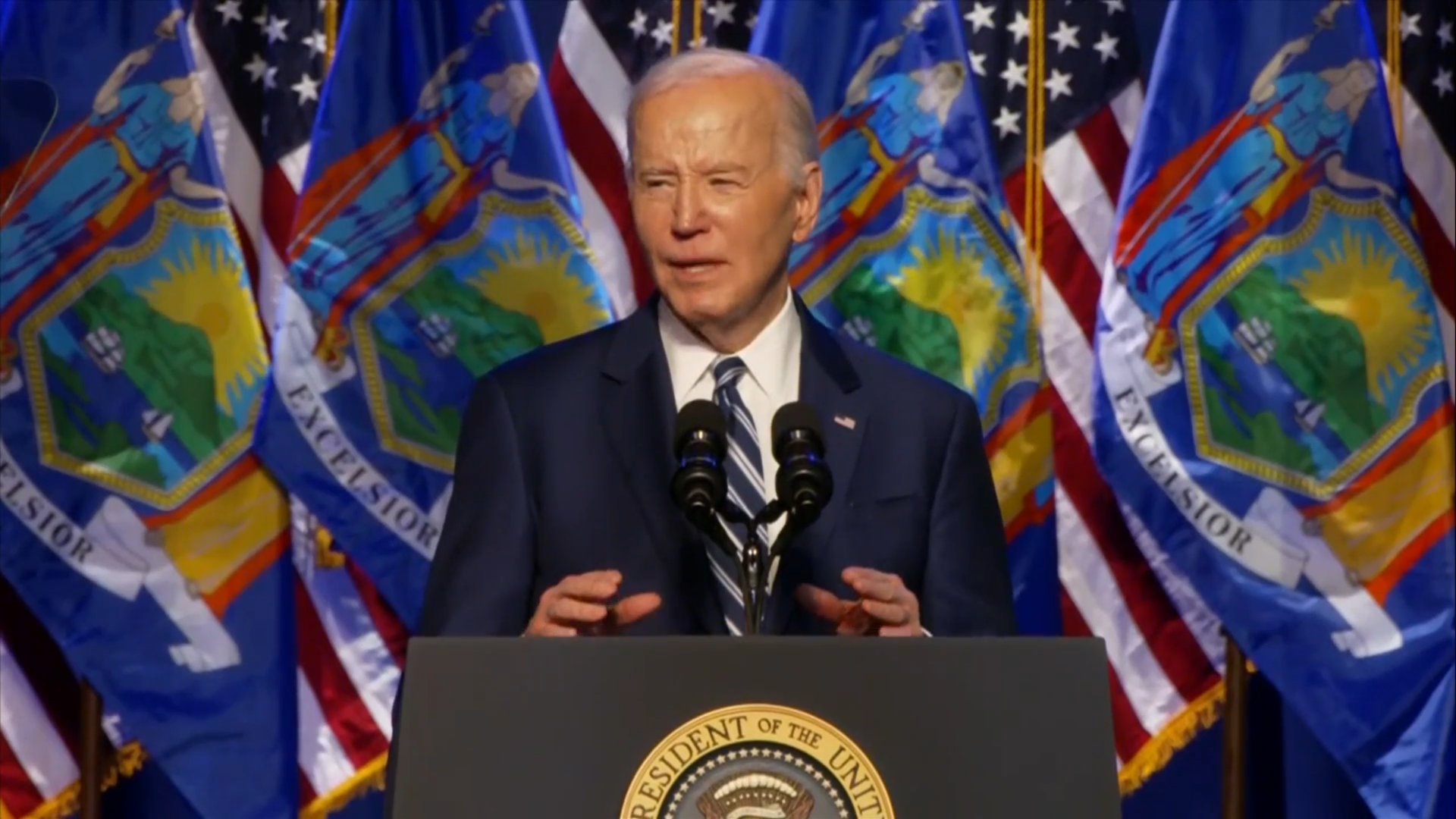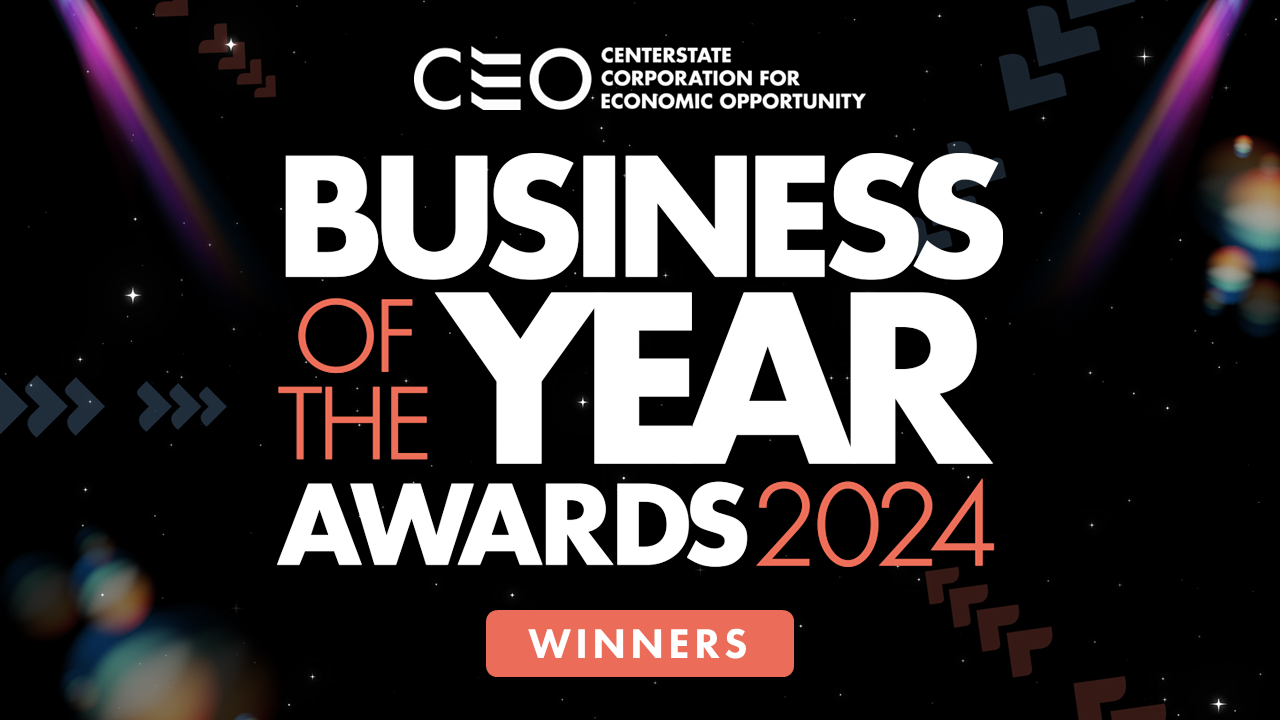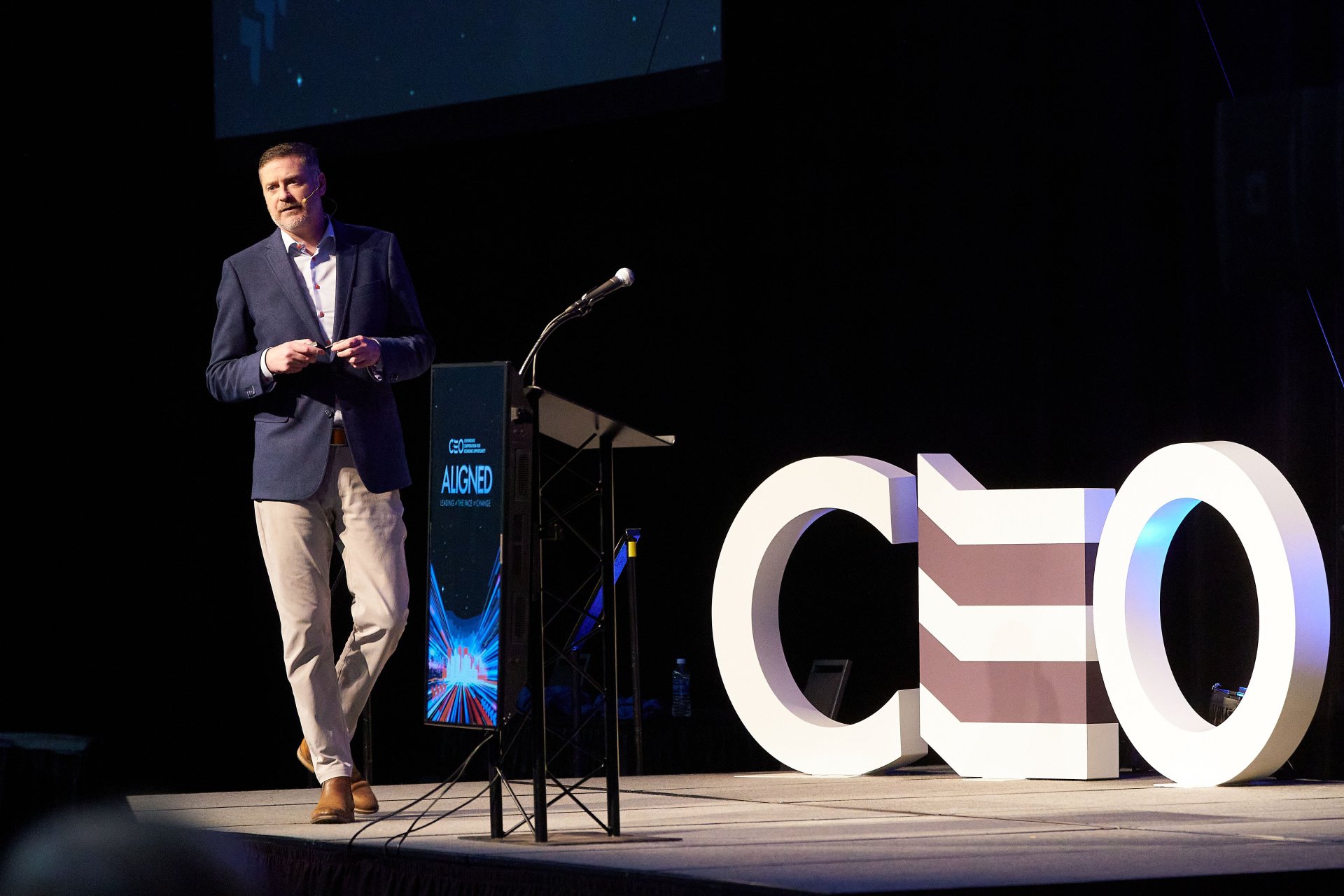CenterState CEO Economic Forecast Remarks by Robert M. SimpsonPosted on January 9, 2018 |
Image

|
Good morning.
To Leslie Paul Luke and St. Joseph’s Health and Allen Naples and M&T Bank, thank you for your support of this event and your unwavering support of our agenda for economic growth and shared prosperity in Central New York.
To all of our members and partners who have joined us today thank you also, for it is your hard work, your investments and your businesses that represent the very lifeblood of our economy.
And to the remarkable staff at CenterState CEO, thank you for your partnership and your tireless work on behalf of our members and our region.
What you just heard from Gary represents a call-to-action for Central New York. On the one hand, the macro-level environment upon which our economy is dependent is improving. GDP growth is accelerating. Small businesses are optimistic. Hiring is up, as is household income. And, barring any major unforeseen global events, the US economy should continue on this upward trajectory through 2018.
Yet here in our own backyard, the economic optimism is more muted. Payroll is up 6 percent overall, but there is broad disparity between industries. Unemployment is down nearly four points since mid-2012, yet it remains higher than the national average. Regional GDP growth continues to lag the nation and some of our peers up and down the Thruway. Job growth in the region remains anemic at 1.2 percent. And there is a growing disparity in employment between those with a college education and those without - among residents with a bachelor’s degree or higher, employment is up 18 percent since 2006, versus a 2.7 percent decline in employment among individuals with less educational attainment.
These statistical trends frame a rough outline of what we might expect for 2018. When seen from up close, its marginal improvements in our economy. But, when seen from afar with larger perspective, its an economy that is still under-performing in the national and global race for investment, wealth, jobs and talent.
Fortunately, any piece of artwork is more than the rough pencil sketch on a blank canvas. It is influenced as much, if not more, by the choices of texture, depth and color that is applied to its outlines. And for that depth and color, we turn to you each year as we prepare our economic forecast.
Sixty-seven percent of our forecasters say they anticipate overall sales and revenue growth in 2018, a strong indication of hope and optimism. 54 percent of survey respondents said they have plans to grow their exports in 2018. 53 percent of you projected that corporate profits will increase in 2018, and that was data gathered before the sweeping tax cuts that were passed late last year that will surely impact corporate profitability in 2018.
All of this translates to 52 percent of our forecasters expecting that they will be hiring in 2018, with just seven percent projecting job losses. On its face, a 45 percent net positive score on the question of hiring is a solid sign for the Central New York economy as we enter the New Year.
Yet many of our forecasters remain guarded. After all, as Gary himself has pointed out countless times before, our regional economy outperforms the nation in times of recession and underperforms in times of economic growth and prosperity, so why should this year be any different?
We’ve heard this narrative before, right? For years we’ve watched the forecasts for slow and sluggish growth. Seen the monthly jobs and unemployment reports that underwhelm us. Followed trends like our growing income inequality and racial segregation. And at some point I fear we’ve stopped viewing these analyses for what they are. Data points. Mostly historical, rearward looking measures of past performance, which any stock broker will tell you is not a sound predictor of future results. After all, no matter how good Gary Keith is -- and we all know he’s very good -- these are forecasts, not prophecy.
This past weekend, I was reminded that hope and optimism are powerful forces for change. Watching as our new mayor, Ben Walsh, was sworn in to office. His inaugural address offered a brighter view of the future of our city and the region that it anchors. His view doesn’t ignore the very real challenges facing Syracuse and Central New York. Rather, it embraces those realities as challenges to be met, head on.
In speaking about the well-documented financial problems that face the city, Mayor Walsh had this to say: “While our city's fiscal condition is precarious, the outcome is not preordained. Current projections are that the city's reserves could be exhausted in as soon as two years. But that assessment is based on the construct and realities that existed yesterday.”
Like our new mayor, I summarily reject the premise that Syracuse and Central New York must be bound by the constraints of the past and can’t do better than what has been predicted by Gary and our forecasters. The insights that we present to you today aren’t inevitabilities, but rather a set of challenges to our region to work harder, smarter and together.
Working Harder
As a business leadership organization, we accept responsibility for our role in changing the dynamics of our economy and for being intentional in our efforts to address economic challenges with economic solutions.
Which is why, last fall, despite long odds and many doubters, CenterState CEO worked with regional partners to prepare and submit a response to Amazon’s request for proposals for its second headquarters (HQ2).
While other communities were sending Amazon CEO Jeff Bezos, cactus trees, reviewing Amazon products online or taking out billboards to showcase their talent and location, we sent a well-research business case focused on three of this region’s unique market assets: low cost of operations, a commitment to sustainable development, and industry leading capabilities in the unmanned aerial systems sector (UAS).
Forget the incentives that everyone is talking about in the Amazon sweepstakes. Our analysis shows that a 50,000 employee second headquarters in Central New York would save Amazon $23 Billion over 20 years compared to their current operations in Seattle. That’s the equivalent of selling 232,323,232 new Amazon Prime memberships. I’d say that’s a pretty strong business case.
We also included something less conventional in our pitch -- the opportunity to positively impact the region’s high concentrations of poverty. For Amazon, a company that has literally disrupted every single industry that it touches, we wanted to challenge them to think about how their investment and decision could serve to disrupt one of the most persistent challenges facing an increasingly divided nation and the growing inequality in the world.
While the betting odds would tell you that Syracuse and Utica/Rome don’t stand a chance, I do believe that what we have achieved in presenting this proposal is important. First, we didn’t listen to those who said we shouldn’t waste our time. We had the audacity to put forward a proposal that was inclusive and collaborative and one that will serve as a blueprint for pursuing other large-scale opportunities in the future.
There is a second part of working harder that bears mentioning. And that is working more rapidly, with a higher degree of urgency. Any business owner will tell you that speed to market is critical. And yet the pace of decision-making in this region can be slow, sometimes tedious.
We’ve discussed efforts to modernize government and share services for decades and yet we’ve made only marginal progress despite broad public support and clear analyses of where to start.
And here we are on the precipice of the most important urban planning and transportation decision our region has faced in 60 years, a decision that has been discussed, debated and researched for an entire decade, and we are faced with yet another delay and further study.
Regardless of what we learn about the social, economic and environmental impacts of a tunnel solution for Interstate 81, it is not going to change the massive cost and 10 year window of disruption that such a decision would bring. Nor will it change the fact that when the analyses are complete and there is nothing left to study, we will still be faced with the same politically difficult decision about the future of our community, about how we will grow, and about what values we will prioritize.
The cost of delay and inaction is a real cost. And if we are to break free from the economic cycle that Gary has described year after year, we need to not only work harder, but also embrace a greater sense of urgency if we want to keep pace with the modern and successful cities of the world.
Working Smarter
Working smarter means letting data, analysis and facts guide our decision-making, not just political expediency. Not all investments are equal. Not all have a sound business plan. And doing our homework is especially critical when we consider the astronomical levels of economic segregation that afflict our community.
Patrick T. Harker, the president and chief executive officer of the Federal Reserve Bank of Philadelphia, presented recently on the relationship between inequality and economic growth. He shared that when additional income goes to the top quintile of earners, GDP falls by .08 percent. In contrast, when the bottom quintile receives additional income, GDP rises by almost 0.4 percent. Childhood poverty alone costs the U.S. almost $500 billion annually, or nearly 4 percent of annual GDP. Now think about that in the context of Syracuse where one of out two children under the age of 18 live in poverty.
So what is the opportunity? We need more people from traditionally marginalized communities participating in the broader regional economy and our efforts to build and grow that economy must involve an intentional focus on inclusion in our decision-making.
Consider this. Blacks and Latinos in New York state own 8,800 business and have a buying power of more than $170 billion. Better connecting to these members of the business community, supporting their growth and advancing their economic prosperity is a major opportunity for us to ignite our economic engines.
When we don’t support women, particularly women entrepreneurs, we also miss out. Last year, of the approximately $60 billion that venture capital firms invested, just $1.5 billion went to businesses with female founders. First Round Capital reports that its investments in companies with a female founder have posted 63 percent better returns than men-only firms.
And there is a generational divide that is putting pressures on businesses and limiting our potential. We heard through our own focus groups this tension between baby boomers and millennials is an issue for many regional companies. While different generational cohorts approach work differently, we shouldn’t view this as a bad thing. The focus shouldn’t be on how we make Millennials work like baby boomers or vice versa, but rather how do we better harness the energy, intellectual capital and unique perspective that each generation brings to maximize our output.
Using research and data can help us make the most of investments in our region. But good data alone is not sufficient. We must have the courage and commitment to follow where it leads us even when that proves politically challenging.
Working Together
If there is one thing that should make us all feel extremely hopeful today, it is that this month offers a reset button of sorts for our community as we welcome a new mayoral administration as well as many new members of the City Council and County Legislature – some of whom are here today.
We know from our past successes that we work best when we work together. And for a community that has found itself mired in conflict and stalled on even some of the most basic initiatives, from collaborating on economic development to sharing municipal services, this moment in time affords us a chance to put recent divisions and disagreements behind us and recommit ourselves to a collaborative and inclusive approach.
Inevitably, we will not all have the same perspective on every project or policy issue. Nor will we all agree with every decision. But it is incumbent upon all of us to look for opportunities to work together, to avoid personalizing any disagreements we do have, and to remember that our goals of creating a community where business thrives and people prosper are largely shared, even when our methods and approach may differ.
Friends, the last few years have seen their share of exciting developments for our region. The emergence of world-class research and development for unmanned systems. The continued resurgence of downtown. A restored Onondaga Lake.
But there is also no doubt that we have had our share of disappointments as well. Of missed opportunities for big and bold thinking and exciting investments that could meaningfully alter the trajectory of our regional economy. And the data that Gary Keith has shared has affirmed that the last few years have not brought about the aggressive turnaround that we all want for Central New York.
So as I prepared for today’s event and poured over the analysis that Gary provided, I found myself looking for perspective on this all too familiar forecast. Trying to find an insight that would allow us to leave this room with a renewed energy to tackle the year ahead. And then, over dinner earlier this week, I realized that it was staring me right in the face.
On Monday, Ben lost his first tooth. And in typical fashion, between the constant wiggling and tugging and checking his progress in the mirror, Ben found the time to be his curious self. To ask why his tooth was falling out. And why it was this one, specifically. And which tooth would be next. And how fast the new tooth would replace it.
And in the process of explaining it all, or at least trying to, it dawned on me. His tooth had to fall out to make space for a new one. And by letting it go, something new and bigger and stronger could grow in its place.
You see, when we hold on to the past too tightly, we fail to make room for new opportunities that represent our future.
The past doesn’t define our future. It’s time to let go of the tired narrative that Central New York is a weak market consigned to slow and steady growth. Likewise, it’s time to let go of past divisions and disappointments and make room for what’s ahead. A brighter future. A more hopeful moment in our community’s historical arc. And growth that exceeds our expectations because we have dared to expect more from ourselves and have chosen to work together to achieve it.
It is with that newfound sense of excitement that I predict a far more successful, prosperous 2018.
Thank you.
Other
CEO News









